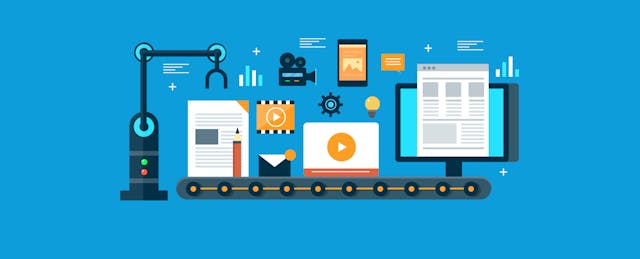Over the past couple of decades, the explosion in online learning has brought with it never-before-seen innovation that has completely transformed the higher education landscape. Yet, as we’ve seen this spike in edtech innovation happening across the globe and real problems getting solved with powerful technology, it’s important to note that some big problems still exist.
For example, until recently, one of the biggest problems facing both administrators and faculty was Learning Management System (LMS) migration. When institutions needed to migrate to a new LMS, they were often stuck doing it the same way it had been done for over 20 years—manually. This meant moving one course at a time or using bulk migration tools that required significant manual cleanup. It wasn’t sophisticated. It wasn’t automated. And it certainly wasn’t technology-driven.
If your institution is planning to move to a new LMS soon, you’re no doubt considering all the possible options to get your course content from your legacy system to your new one. You’re probably also thinking about getting it done quickly, with as little disruption to your stakeholders as possible, all while staying within budget. That’s a tall order, but it is possible.
The Problem with a Manual LMS Course Migration
In the past, institutions migrating to a new LMS were limited to just a few options—all of which were rooted in a manual process:
- Bulk migration tools are not nearly as effective as institutions are led to believe. They can leave much of the course content fragmented, requiring manual cleanup. And while these are often sold as an “automated solution,” faculty and staff soon find that their courses need extensive manual intervention.
- Manual copying and pasting led by faculty and staff requires a considerable investment of time and quickly takes a toll on everyone involved. This often starts with the notion that faculty can clean and update their courses as they move them to the new LMS. While this sounds great in theory, the reality is that it can take tens of hours just to migrate a single course.
- White-glove firms are simply outsourced services that manually copy and paste the old course content into the new LMS. While faculty and staff may be spared the heavy lifting, the process is still manual, which means that it’s just as time-consuming and prone to human error as both of the previous options. Yet, it’s much more expensive than either.
Each approach above is built on the foundation of a manual process. Unfortunately, manual migrations tend to be slow, prone to error, frustrating for most stakeholders and costly. This last pain point often comes as a particularly bitter surprise when institutions discover that they need to keep their legacy LMS up and running until they’ve migrated their very last course to the new platform. This means paying for two LMS platforms simultaneously for an undetermined length of time.
Why Is an Automated Solution Better?
Recognizing the need for a truly automated service to migrate LMS content, our team at K16 Solutions has developed SystemMigration. Using state-of-the-art technology to migrate course content in real time, our automated service pulls in all content types—assessments, assignments, gradebooks, attachments, files—and does a one-to-one match with your new LMS to ensure a complete and clean transfer.
We work with hundreds of institutions across the country, providing a reliable alternative to the manual process and eliminating the multitude of problems experienced with traditional migrations. K16 Solutions averages about 6,000 error-free course migrations per week, per institution, on a timeline of 60-90 days for each project.
Mohawk College
20,000 Courses Migrated with SystemMigration
Project Timeline: 10 Days
“K16's automated SystemMigration service saved a huge amount of work for faculty, eliminating the need for them to reconfigure and reformat their courses, content, quizzes, and other course materials. The consistency of the data and files that were migrated helped the Center for Teaching & Learning team to inform, train, and orientate faculty and staff on the new platform.”
Medical University of South Carolina
1,000 Courses Migrated with SystemMigration
“We knew the end was imminent. We are small but mighty, but we are also human. There was no way we could do every single piece alone. Luckily, we were provided the opportunity to use K16 Solutions by our LMS provider, D2L.”
With our automated solution, faculty can quickly get back to teaching the same course in their brand new LMS without worrying about migrating, reconciling or replacing content. And students can now have a seamless online experience from class to class. Neither group has to worry about the inconsistency of teaching or learning across two separate LMS platforms.
Read the following case study to discover how Goodwin University—an institution with limited staff and resources—successfully migrated their course content with our innovative, automated approach.




